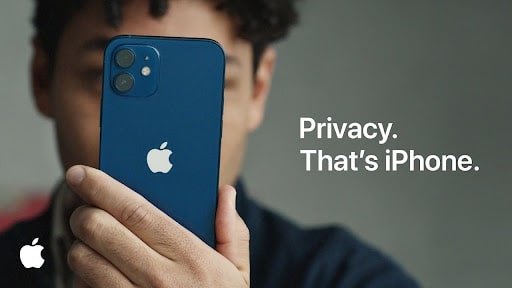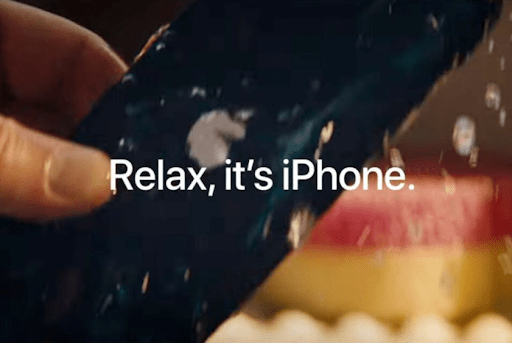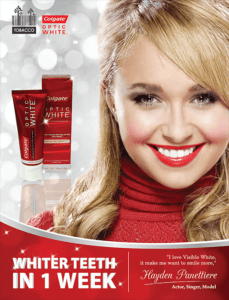Benefit Segmentation Definition & Examples
Benefit segmentation can help reduce churn, increase retention, and improve conversion rates. Learn how benefit segmentation works, its benefits, and examples of how companies have used benefit segmentation to successfully appeal to different demographics.
Updated on December 1, 2021
Marketing is about appealing to the needs and desires of consumers, learning what they want, and showing them that your business can provide the goods or services they require. But, a customer's individual needs and desires vary, meaning everyone buys products for different reasons.
To create a more effective digital marketing strategy, businesses must effectively address the needs of each of their customers.
Benefit segmentation is the process of dividing a company's audience into smaller groups based on their needs and desires. As a result, benefit segmentation often leads to increased conversion rates and retention.
This guide covers all you need to know about benefit segmentation, including:
- Benefit segmentation definition
- The importance of benefit segmentation
- Benefit segmentation examples
Need help selecting a company?
Based on your budget, timeline, and specifications we can help you build a shortlist of companies that perfectly matches your project needs. Get started by submitting your project details.
What Is Benefit Segmentation?
Benefit segmentation is a marketing practice that involves splitting your audience into key groups based on their needs. Businesses recognize that some customers may be attracted to different products than others, and will use benefit segmentation to promote those products or services to those groups.
In other instances, businesses may determine that the same product appeals to different customers for different reasons. To address this, they may come up with different ads that highlight each benefit for those audiences.
Why Does Benefit Segmentation Matter?
By highlighting the features that matter most to each group and creating targeted content, businesses are able to market to each segment more effectively—resulting in more sales and a higher conversion rate.
Rather than producing general ads, businesses are able to spotlight the features, values, and aspects of their business, products, and services that customers really want.
Recommended reading, ‘How to Create an Effective Buyer Journey Map.’
5 Advantages of Benefit Segmentation
Benefit segmentation helps businesses cater to the specific demands of their audiences.
Here are 5 advantages of benefit segmentation:
- Better conversion rates
- Greater customer engagement
- Decrease churn
- Strengthen brand identity
- Increase market share
1. Better Conversion Rates
Benefit segmentation allows marketing teams to tailor campaigns for their customers, resulting in higher conversion rates.
Marketing and advertising strategies that focus on how a company’s products can benefit the customer are more appealing, making them more likely to make a purchase.
2. Greater Customer Engagement
By addressing their customer’s specific needs, businesses can improve customer satisfaction, increase engagement and lead to repeat customers.
Benefit segmentation can also showcase the value of a product or service provided. This allows marketing and sales teams to create more compelling campaigns that specifically target potential buyers.
3. Decrease Churn
Churn, or attrition rate, measures how many customers a company loses over a period of time. Since the cost of acquiring new customers is much higher than returning customers, it benefits companies to invest in retaining their existing customers.
Benefit segmentation increases retention by helping businesses meet their customers’ unique needs, leaving them with no desire to shop anywhere else in the future. This helps brands build customer loyalty and avoid churn.
4. Strengthen Brand Identity
By highlighting the most appealing features of a product for interested audiences, businesses can grow their reputation as an industry leader.
This can build consumer confidence in a brand and make it more likely for buyers to choose your brand over your competitors.
5. Increase Market Share
Audience segmentation provides a more targeted and custom approach to customer acquisition, giving you a competitive edge in saturated markets.
When businesses first launch, they often provide one product or service, a very specific brand image, and maybe one ideal customer; however, this process is iterative. As a business matures, they will likely roll out new products or expand into new markets to attract a larger audience.
Benefit segmentation allows companies to target new audiences without isolating their existing customer base. By attracting new customers with different backgrounds, businesses will be able to increase their market share or break into new ones.
Examples of Benefit Segmentation
Now that you've seen what benefit segmentation is and the advantages of this marketing strategy, let's take a look at some real-world examples to demonstrate just how effective benefit segmentation can be.
Dodge
When looking for a new car, for example, some people might be drawn to speed and performance, while others might favor a vehicle with a strong fuel economy. Dodge did just that when advertising their Ram truck.
The above ad shows a Dodge Ram in a rugged environment, with dusty trails and harsh conditions, coupled with tough-looking metallic font and a focus on the vehicle's strength and capabilities.
In contrast, ad below, which features a similar vehicle in a clean, city environment and a message focusing on its fuel economy. The second ad appeals to urban drivers who want the space and capabilities of a truck without having to spend too much money on gas.
In a third ad, Dodge featured a similar vehicle, but instead focused on an award the truck won for “Driver Appeal."
This final ad helps give the Dodge Ram brand more value and credibility in the eyes of buyers.
Under Armour
Under Armour uses benefit segmentation to advertise different products and target different types of athletes. Originally known for their product placement in the football film Any Given Sunday, Under Armour struggled to appeal to women for several years.
In 2013, women accounted for $500 million dollars in sales — only about 20% of their total revenue.
To target women, they launched their “I Will What I Want Campaign,” highlighting strong female athletes such as Misty Copeland, Lindsey Vonn, Gisele Bundchen, Kelley O’Hara, and Natasha Hastings.

Source: Time
Misty Copeland in particular stood out as an African-American ballerina — her story about overcoming remarks about her skin color and body type drove home Under Armour’s message about perseverance.
At the same time, ballet seemed to juxtapose Under Armour’s traditional image, showcasing that they produce high-performance gear for all athletes regardless of sport or gender.
By appealing to women, this campaign helped Under Armour compete with brands in adjacent markets such as Lululemon and Athleta. They were able to promote products such as leggings and sports bras that helped them break into the market.
As a result, Under Armour’s sales increased from $2.3 Billion to $3 Billion and they became the second-largest domestic sportswear brand.
Even in 2021, Under Armour’s campaigns include athletes from different sports, backgrounds, and performance levels.

Source: Under Armour
Their “The Only Way Is Through” campaign featured high school, college, and professional athletes ranging from running and lacrosse to swimming, skiing, and basketball.
By using benefit segmentation, Under Armour was able to showcase a variety of their products and appeal to different groups of people.
Colgate
The toothpaste industry is replete with examples of benefit segmentation. Colgate's marketing, advertisements, and packaging tactics target different segments of their audience by focusing on different benefits.
Many toothpaste brands promote several products with different benefits. For example, one type of toothpaste might be better for freshening breath while others help with tooth sensitivity. This allows Colgate to appeal to individual segments of its audience.
In this advertisement promoting their toothpaste for strong teeth, they focus on how it can prevent cavities.
At the same time, children are most susceptible to cavities because of sugar and poor tooth brushing. To target families who are more concerned about cavities, Colgate chose to feature a parent and child in their print ad.
In contrast, their ad for their teeth whitening product features the actor Hayden Panettiere.
This ad focuses more on the aesthetic benefits of dental hygiene and is more effective at targeting young adults.
For families looking to prevent their kid’s cavities, this clearly isn’t the product for them. However, it would appeal to people who are trying to get rid of coffee stains or want to appear younger.
Spotify
Spotify often focuses on the streaming content they provide to appeal to customers. Whether you’re streaming music in the car or listening to a podcast as you walk your dog, Spotify provides content and a high-quality listening experience.
In 2019, they launched a highway billboard campaign called “For the Ride” to appeal to drivers. The campaign was visible to drivers as they hit the road.
By focusing on how entertaining and enjoyable Spotify can be while in the car, they hoped to attract listeners on road trips or their morning commute.

Though the campaign appealed to drivers with different content preferences, it didn’t reach other users.
In another ad campaign, they went in a completely different direction. Instead of focusing on the content they provide, Spotify chose to focus on the benefits of their different plans.
To promote their “Premium Duo” campaign to couples, they took out magazines and newspaper ads and offered discount "Premium Duo" memberships.
The “For the Ride” campaign and the “Premium Duo” campaign showcased completely different benefits: while the first emphasized content, the second showed how users could save money.
Apple
Over the last few years, Apple has received growing criticism for everything from unethical business practices to privacy issues.
In 2019, PEW Research Center released a study that revealed that most Americans were concerned about the security of their personal information.
Of those who responded, 72% reported feeling that all, almost all, or most of what they do online or while using their cellphone is being tracked by advertisers, technology firms, or other companies.
To address this growing concern, Apple launched a new campaign that promoted the iPhone13 and showcased how Apple's privacy features could protect their data from third parties.

Source: YouTube
The focus on privacy appeals to certain demographics, such as those over 65 and Black Americans who are more likely to be concerned about how the government uses cell phone data to track them.
However, this is less of a concern for younger demographics who feel like they have more control over their data.
To appeal to them, Apple launched a different campaign focusing on the iPhone13’s other major benefit — durability.

Source: The Apple Post
For years, the iPhone's sleek, glass look has come at a price; it easily broke and was particularly susceptible to water damage. Apple tried to fix this when they launched the iPhone 12 by creating the “ceramic shield,” a tougher glass that is scratch and crack-resistant.
By showing how the new iPhones could stand up to water and drops, they hoped to convince users to upgrade their phones. Yes, it might cost a lot to upgrade, but they wouldn’t have to worry as much about destroying their phone and having to replace it.
Benefit Segmentation Is an Effective Marketing Strategy
Benefit segmentation is an effective marketing strategy that can make a difference–aiding everything from engagement to branding.
Since people have different motivations and are compelled by different things, benefit segmentation helps companies appeal to each individual’s needs.
By highlighting the benefits of their products and catering content to appeal to specific segments of their audience, industry leaders like Dodge, Colgate, Spotify, Under Armour, and Apple have used benefit segmentation to create more effective campaigns.
Ads and marketing materials that directly address what each audience segment is looking for have higher conversion and retention rates.
Need Help Selecting a Digital Marketing Agency?
We’ve created a directory of digital marketing firms to help you compare and connect with the right companies. Use client review ratings, services offered, and client focus to create a shortlist of inbound marketing firms. If you want personalized recommendations, share your project details with us.
Additional Reading:
Need help selecting a company?
Based on your budget, timeline, and specifications we can help you build a shortlist of companies that perfectly matches your project needs. Get started by submitting your project details.





